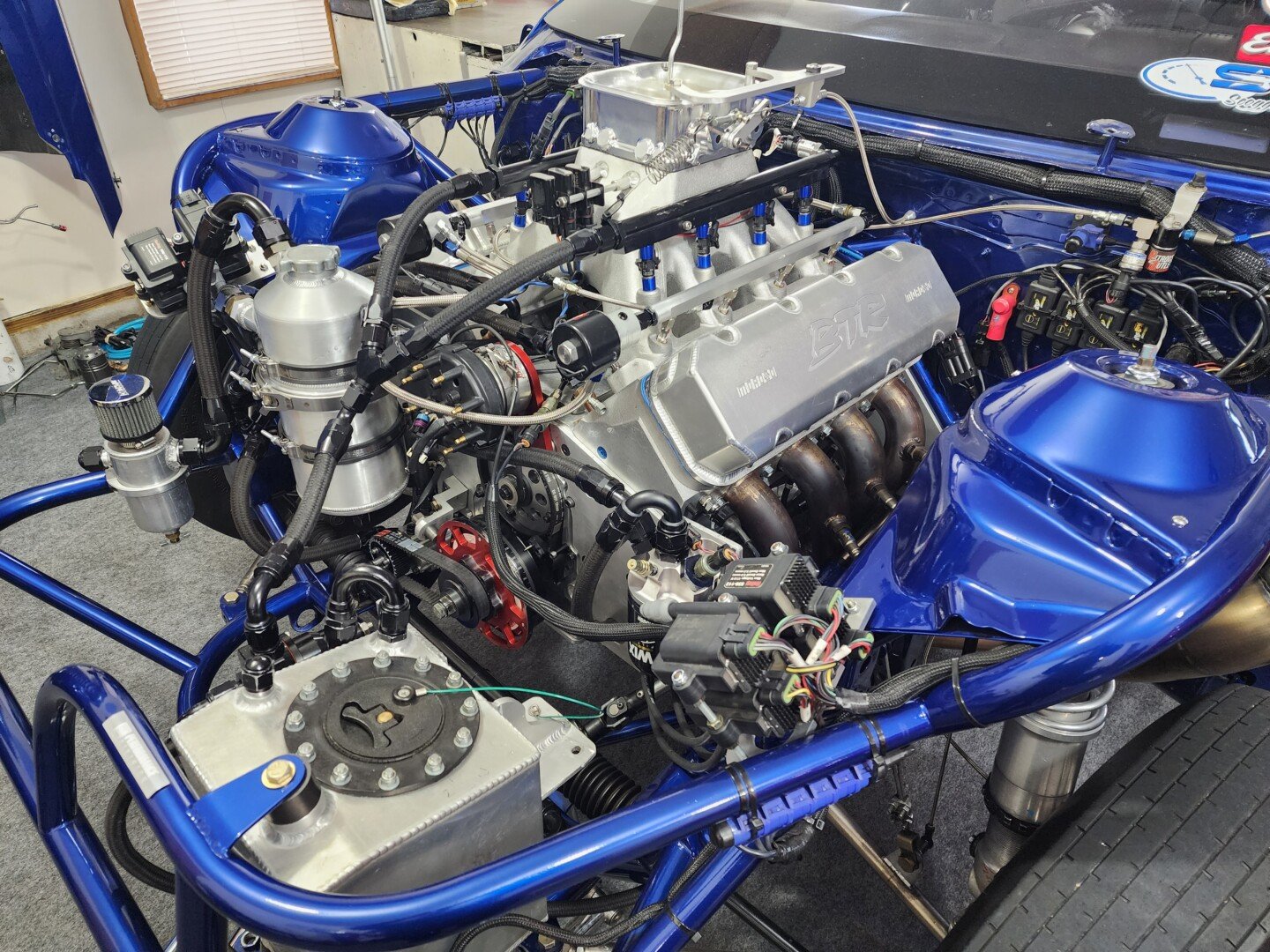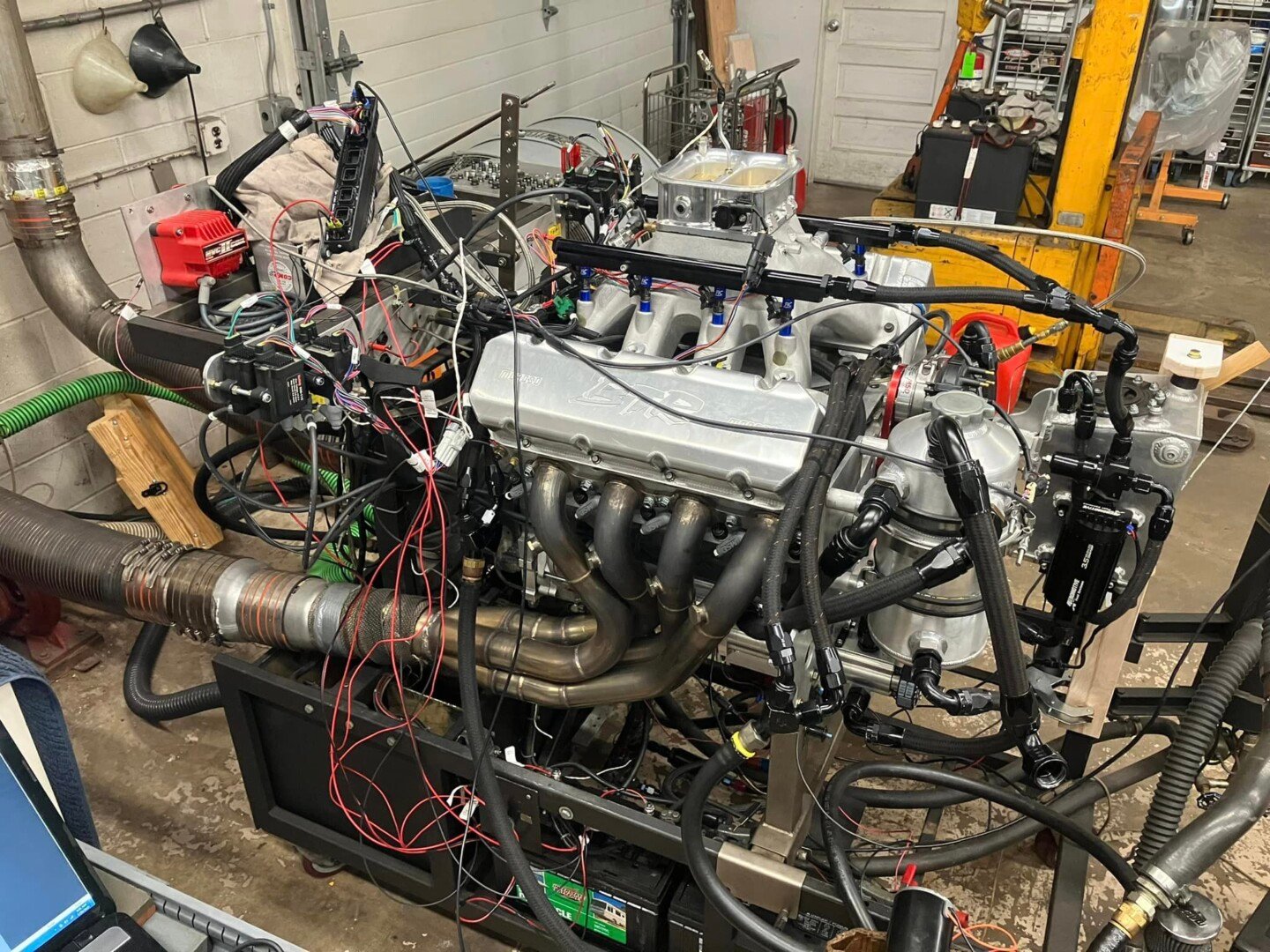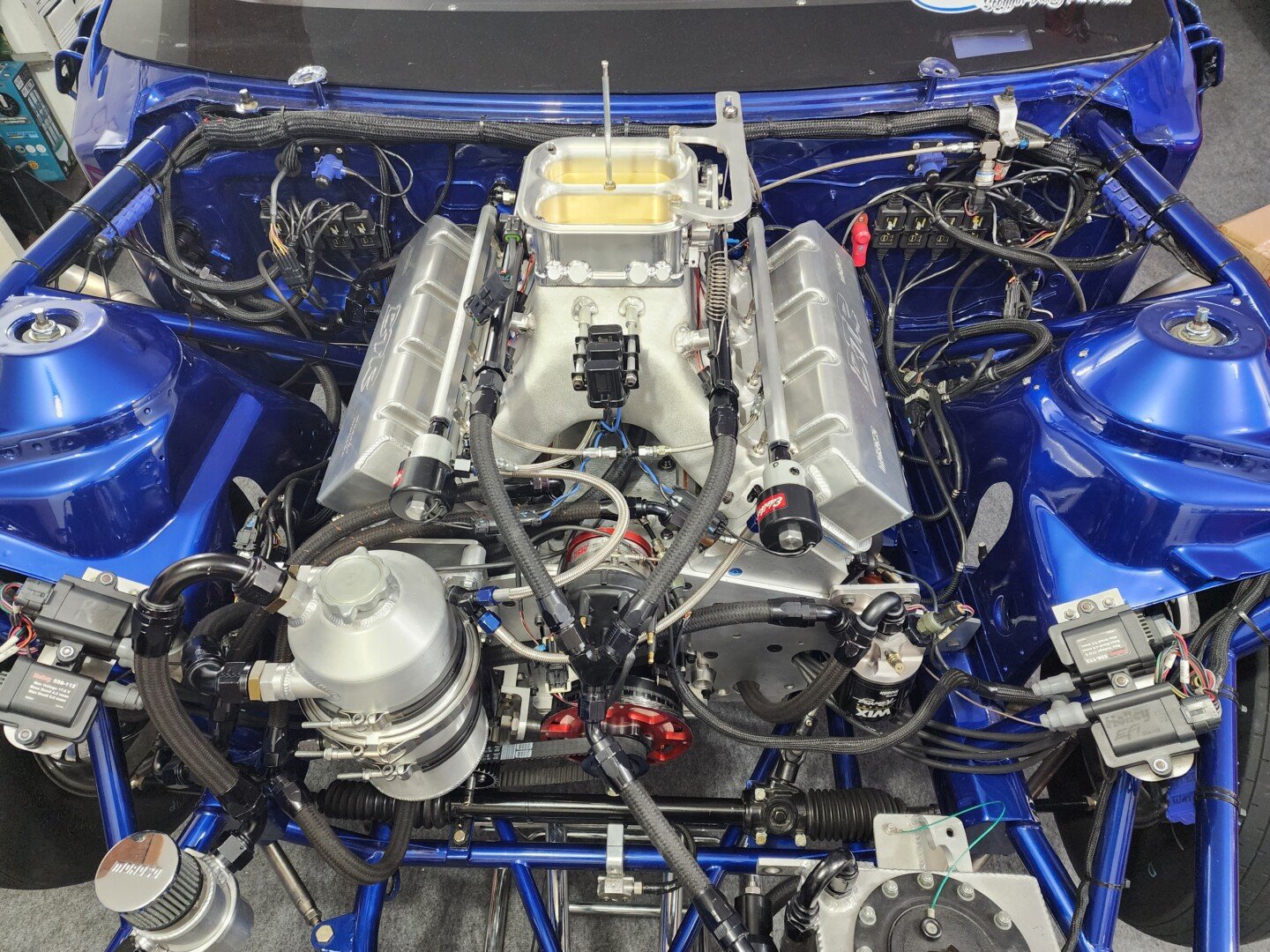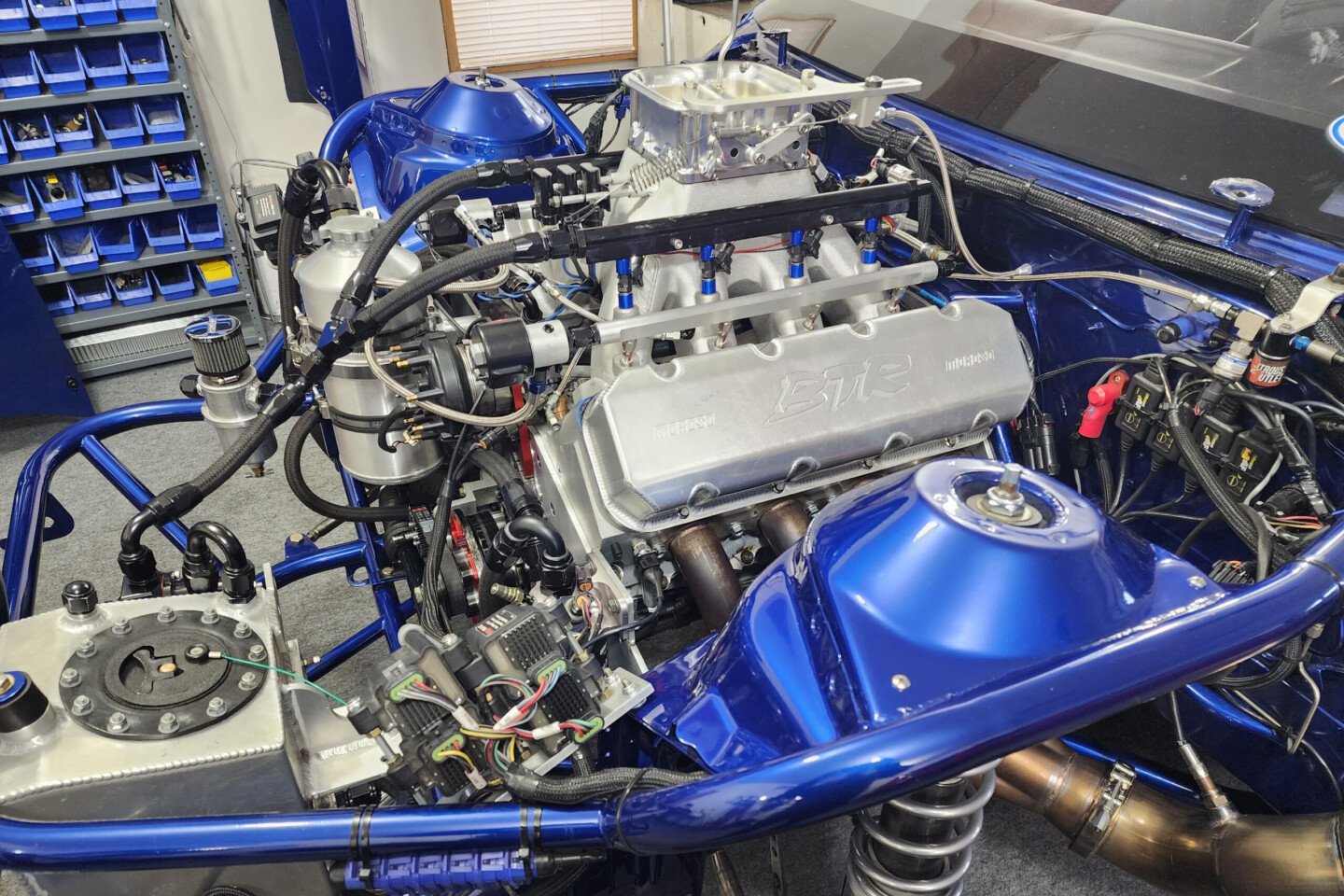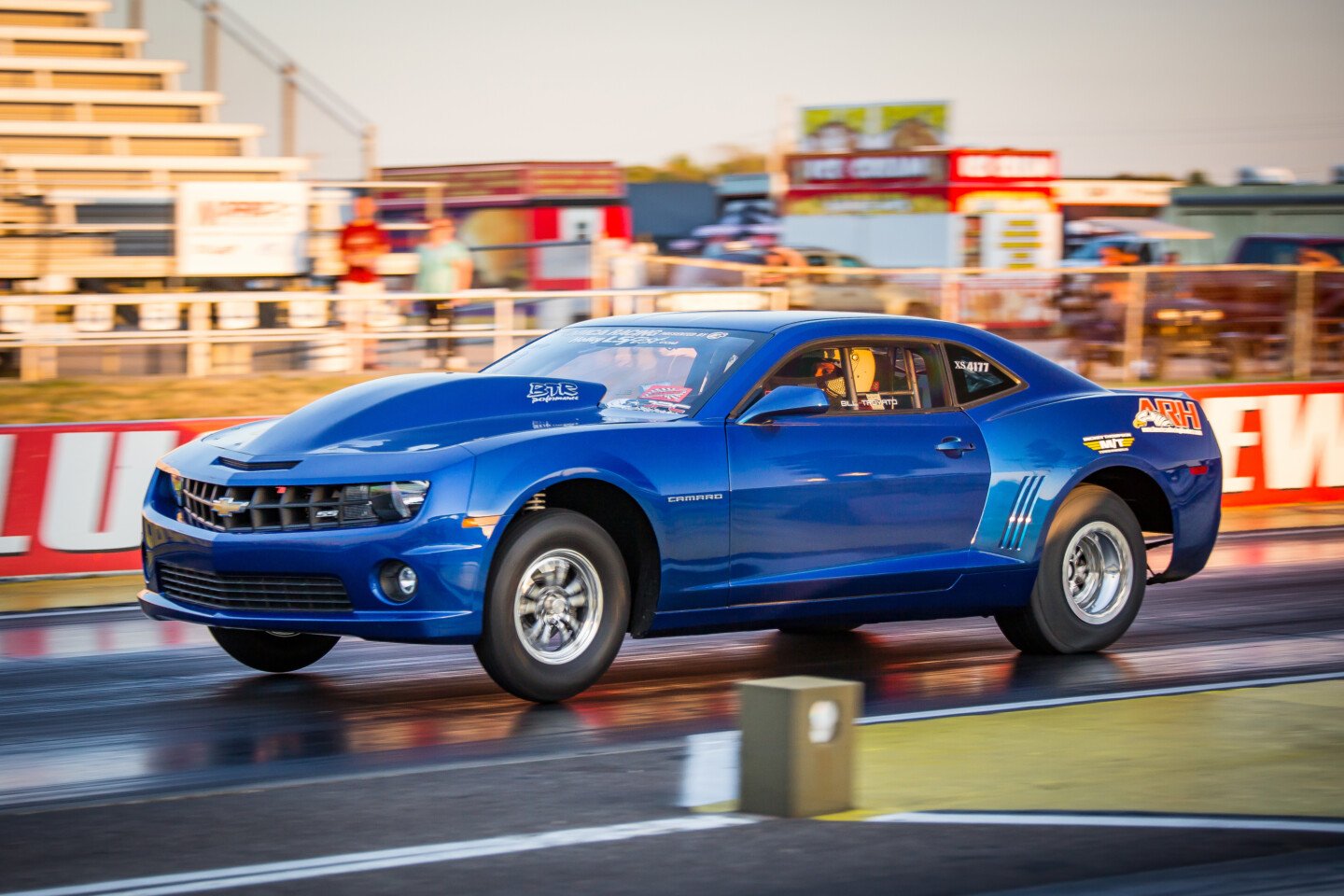Like many longtime drag racers, Bill Trovato is an automotive old dog who doesn’t want to learn new tricks. A 57-year-old carb guy who, like many carb guys, knows what works when it comes to tuning his preferred form of induction and fueling. Forget all that EFI computer tuning diagnostic noise and direct injection mumbo-jumbo. Carburetors rule… right? But the call of a carb-delete is hard to resist.
Those who are familiar with Bill and his 2013 Camaro race car, know full well that the guy is also hopelessly hooked on giggle gas. A nitrous guy with a self-confessed straight-line speedster mentality, and zero interest in taking the boosted bypass. May it be at a snail’s pace or a blower’s bidding, Bill has zero interest in adding either form of forced induction to his Camaro.
But whereas the use of forced induction remains completely out of the question, converting over to fuel injection suddenly became an option in 2022. Primarily out of necessity, and partially due to curiosity, Bill made the move after decades of resistance, and holy hell was he surprised by the results.
Does fuel injection truly have the power to outperform a perfectly tuned high-performance carburetor configuration on a drag monster? And if so, what does that translate to in regard to reliability and tuning headaches? These and many more questions plagued Mr. Trovato’s thoughts all the way up until the proverbial proof hit the pavement.
We recently caught up with the BTR Performance founder and drag car pilot to get the inside scoop on his little EFI carb-delete experiment, and man did he have one heck of a story to tell…
Confounded Carburetor Constrictions
Bill’s engine is a 465-cubic-inch small-block LS engine. A dry-sump setup with a solid core of internal upgrades that’s been built for nitrous action. Controlled by a three-speed Turbo 400A tranny from RPM Transmission, Bill’s motor consistently made around 940 horsepower in naturally aspirated carb form. Not bad by any means, especially considering that a fat splash of laughing gas lay just a button mash away.
But when Bill began looking at his carbureted fuel numbers, he was left feeling equal parts aghast and unsure about his racing future. His powerplant combo may have made high-RPM shenanigans a cinch, but the engine’s fuel flow figures were leveling out in the higher RPM range and power was dropping. It was an issue that Bill had noticed on track on occasion, but had assumed was either driver error or environmental circumstances.
Naturally, Bill’s first thought was that the intake manifold was holding things back. But as he delved deeper into the details of the specifics of his engine configuration, he soon realized that this simply was not the case.
Carbureted intake manifolds have very different needs than traditional fuel injection and EFI carb delete kits as well. The runners can’t point directly at the booster, and the carb itself can’t be too close to the manifold due to “reversion concerns.” These and a million other reasons are precisely why fuel injection guys hate tinkering with carbureted motors. But I digress…
While the lack of oomph on the unsprayed top-end side of the spectrum was indeed an issue while out on track, there were other concerns to contend with as well. The engine was starving at certain RPM, suddenly going lean at the most inopportune of times both down low and up top.
It had gotten to the point where I realized that I would need to either hang up my career or fix this… ’cause even the best carb guy in the biz couldn’t fix my issues. — Bill Trovato
Try as he might, Bill couldn’t find a solution to his fueling issues, with the carbureted motor consistently losing signal within the manifold, presumably somewhere past the venturi configuration he was running. Further complicating matters, was the fact that running smaller carbs wasn’t helping bottom-end issues whatsoever. No amount of tuning was giving Bill’s Camaro the upper hand on the top end of the N/A radar either.
And so one day, Bill Trovato did something he never thought he would do in his lifetime… He swapped his race car over to an EFI setup. But before he could do that, Bill explains that he needed to secure some assistance.
Constructing The Right EFI Crew
Like any car guy worth his salt, Bill did what any of us would do. He called in the help of guys who specialized in areas of automotive expertise where he found himself lacking. While his best friend Dale had long been Bill’s “secret weapon” when it came to solving issues and maximizing performance potential, swapping that LS small-block over to an EFI setup required some additional outside assistance.
Enter Mike Thompson. A Holley injection guru, with computer-savvy smarts and racing experience to expose and solve the issues that had been plaguing the platform and its driver.
If you don’t know how to fix something, then you hire the guy who does. — Bill Trovato
In no time flat, Bill had assembled a specialized EFI team, and the teardown was well underway. Exposing and fixing the LS engine’s woes meant not only roping in “crew chief,” David Mitchell, for additional assistance but a few other helping hands as well.
In order to rework the intake manifold, and get it primed for EFI animosity, Bill tapped a cat by the name of Brett Miller to help out with intake manifold mods. The manifold he had been running was originally built by a guy called Marty Zimmerman. A bit of an automotive mad scientist who for the longest time worked for a NASCAR team as their head of cylinder head services.
With a Holley Dominator EFI kit on hand, along with a data system matched to a Racepak Smartwire power control module at the ready, the team set to infuse Bill’s old LS motor with a “spray and pray mentality.”
The Carb-To-EFI Conversion Conundrum
By this point, it was mid-2022, and Bill’s race season was in full swing. So with both the remainder of the season (and his reputation) on the line, Bill and his crew dove head first into the conversion process.
After testing the carbureted motor’s metrics, determining that 940-horsepower was about as good as they were going to get, and swapping the intake end over to a well-tuned Holley EFI carb-delete setup, the results proved irrefutable. It took a bit of tinkering, and some serious consideration regarding the upper end (as well as a few safety concerns Bill had), but a medium was struck within the 465-cubic-inch LS engine.
Some significant retuning and a few modifications later, and a set of fresh dyno pulls provided proof that the recently installed EFI swap was producing additional power. Not only that, but it was also sending it precisely to where it was needed most. Superior atomized fueling efficiency and overall flow within the manifold had allowed more power to be produced on the top-end portion of the dyno graph, where a respectable 40-plus horsepower bump could now be observed.
Humming to the tune of 8,000-to-9,200 rpm, Holley’s Dominator EFI setup continuously came out on top to the tune of an additional 40 horses. With the next race being but a few winks away, and the EFI motor tested, calibrated, and back in the car, it was time to see if all of that hard work and experimentation had paid off.
With an EFI setup on board, Bill is not nearly as concerned about hurting the motor as much as he was when it was carbureted.
Nitrous And EFI Powers Combined
Contrary to common belief, fuel does not keep a nitrous motor safe, especially when the engine in question is carbureted.
A high-vacuum situation on carb motors can quickly occur when you get off the throttle, especially with a robust intermediate circuit in full effect. But as Bill is quick to point out, you don’t have to worry about that sort of scenario with a properly tuned EFI system. Let off that throttle, and an EFI setup will cut your engine’s cylinders off from that liquid faster than a drunk uncle down at the local watering hole.
Naturally, Bill understands full well that you can only rely on the dyno so much for registering performance potential as well. This is especially true on a nitrous-fed car. So with that in mind, Bill and his computer-inclined sidekicks took their naturally aspirated knowledge from the pulls made over at BTR Performance and headed to the next event.
“Small-block nitrous combos are the hardest to run. You should seriously get your head checked if you want to run that combo. — Bill Trovato

While the motor was engineered to be a nitrous-fed drag engine, Bill at BTR Performance and his EFI assistants opted to keep their testing in line with NA pulls.
So… How Did it Go?
A few short days after the conversion was complete, Mike made the drive from New York to Michigan to meet Bill at his next race.
Being able to get up on the ‘brake at the start, with a healthier engine that could now keep the fuel safely flowing at any given speed provided Bill with the confidence he needed to push the Camaro harder than ever. And push it he did. Bill and his EFI-oriented team took home the number-one spot at that particular event.
Bill, deciding to pull the trigger on the EFI conversion just prior to the third race of 2022 had proven to be a wise move, as both car and driver emerged stronger than ever. The culmination of the 2022 season provided plenty of proof, with Bill securing a win at the Yellow Bullet Race in Maryland that week.
All told, Bill and his Camaro would go on to finish second in overall points during the 2022 NMCA race season. The duo would also take home the coveted $10,000 grand prize as the winner at the aforementioned Yellow Bullet Ultra Street Race that year.
Going Fast In The Year Of The Rabbit
When asked about the upcoming race season, and what he feels the car might need, Bill tells us that he is just excited about the entire situation. That said, he does feel that there might be a need to adjust shift points going forward, but outside of that, his Chevy is ready to race any given weekend.
On the carbureted motor, dyno results proved that shifting at 8,600 rpm was ideal. Upon completing the EFI swap, these calibrations went completely unchanged. The dyno sheet had shown zero sign that there was a need to change things up, and Mike concurred that any alteration to transmission shift points might could potentially hurt more than help.
Knowing full well that his EFI conversion has virtually eliminated any risk of over-fueling, Bill proclaims that this swap single-handedly helped “keep the motor alive” for the remainder of the 2022 race season.
Heading into the 2023 race season, Bill remains fairly optimistic and feels that as time goes by, the car will only get faster. If he can cut a good light, the veteran driver knows that the car will be a consistent performer all season. Even if a competitor is faster by a few hundredths of a second, Bill knows that he can now get his car to hook up better and faster, and own everything that the track has to offer down the straight. This a testament to the fact that by taking the initiative to learn a few new tricks, even the most stubborn boomer can still run with the big dogs.
“Even after all these years of racing, I realize that the more you learn about things, the more you realize you don’t know s***. — Bill Trovato
Engine Specs
465 cubic inch LS engine
– Dart cast-aluminum block
– Bryant crankshaft
– CP pistons
– GRP connecting rods
– Edelbrock LSR heads ported by Mart Zimmerman
– CID intake manifold ported by Mart Zimmerman
– T&D steel valvetrain
– Cam Motion camshaft
– Holley Dominator EFI
– Moroso sheet metal valve covers
– Dailey Engineering Dry sump system
– Champion Racing oil 0W30
– Clevite engine bearings
– Flatout copper head gaskets w/ hoops
– American Racing headers




